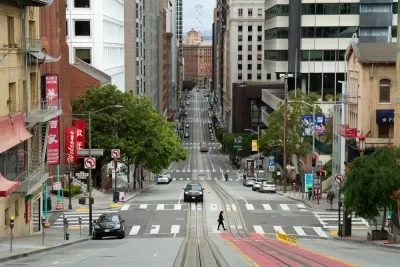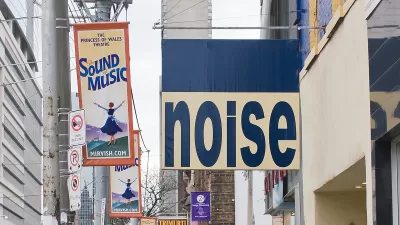The usual sounds of the city have subsided, replaced by birds and quiet that at times can be eery and unsettling.

Quoctrung Bui and Emily Badger share details of research that reveals the details of one of the most obvious and thorough changes in cities during the coronavirus pandemic: the eerie quiet of days and nights, punctured occasionally by sirens and birdsong.
"The city no longer sounds the same," according to the article, and researchers are documenting just how complete the change has been. The article focuses on recordings made by researchers at an N.Y.U. project called SONYC, who have recorded audio clips from 16 microphones monitoring patterns in noise pollution in the city for more than three years.
"The microphones are mostly in Manhattan, with others in Downtown Brooklyn and Corona in Queens, but the yearslong audio archive gives a clear sense of a citywide rhythm over time — in normal times," according to the article.
A key finding of the recordings produced during the pandemic: "Twenty-nine of the city’s 30 quietest days during the last three years have been during the pandemic, the recordings suggest. The exception was Christmas Day in 2018."
Similar results have been found with experiments in other cities around the world. The Senseable City Lab at M.I.T., for example, has recorded walks through city parks in Singapore, New York and San Francisco. "In Golden Gate Park in San Francisco, they’ve found, the ambient noise of the city — cars driving by, construction work — has declined, replaced by birdsong," according to Bui and Badger.
Another key point made in the article is that not everyone likes a quieter city. Some are even nostalgic for sounds that used to be annoying.
FULL STORY: The Coronavirus Quieted City Noise. Listen to What’s Left.

Planetizen Federal Action Tracker
A weekly monitor of how Trump’s orders and actions are impacting planners and planning in America.

Map: Where Senate Republicans Want to Sell Your Public Lands
For public land advocates, the Senate Republicans’ proposal to sell millions of acres of public land in the West is “the biggest fight of their careers.”

Restaurant Patios Were a Pandemic Win — Why Were They so Hard to Keep?
Social distancing requirements and changes in travel patterns prompted cities to pilot new uses for street and sidewalk space. Then it got complicated.

California Homeless Arrests, Citations Spike After Ruling
An investigation reveals that anti-homeless actions increased up to 500% after Grants Pass v. Johnson — even in cities claiming no policy change.

Albuquerque Route 66 Motels Become Affordable Housing
A $4 million city fund is incentivizing developers to breathe new life into derelict midcentury motels.

DC Area County Eliminates Bus Fares
Montgomery County joins a growing trend of making transit free.
Urban Design for Planners 1: Software Tools
This six-course series explores essential urban design concepts using open source software and equips planners with the tools they need to participate fully in the urban design process.
Planning for Universal Design
Learn the tools for implementing Universal Design in planning regulations.
Heyer Gruel & Associates PA
JM Goldson LLC
Custer County Colorado
City of Camden Redevelopment Agency
City of Astoria
Transportation Research & Education Center (TREC) at Portland State University
Camden Redevelopment Agency
City of Claremont
Municipality of Princeton (NJ)





























